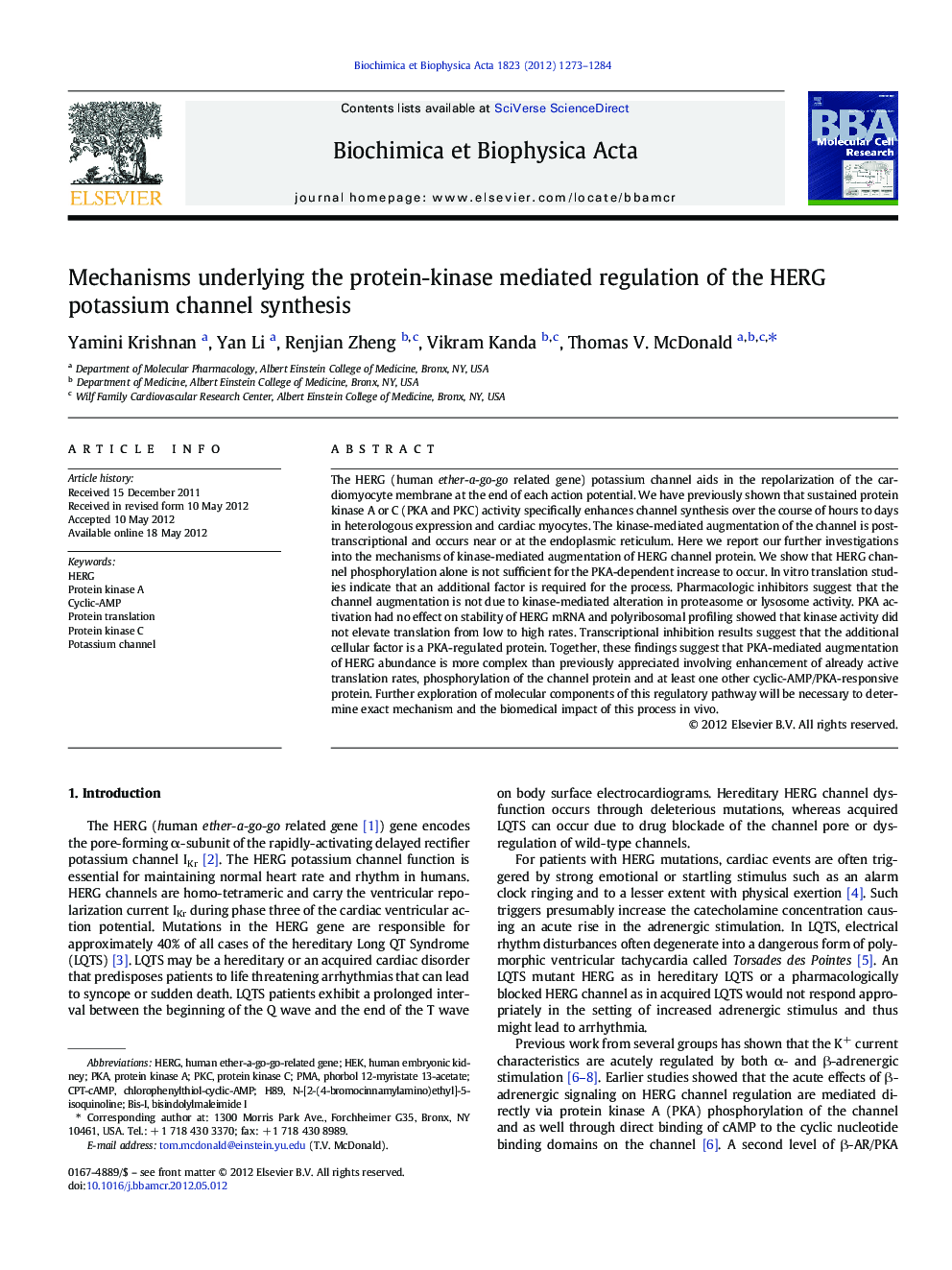| کد مقاله | کد نشریه | سال انتشار | مقاله انگلیسی | نسخه تمام متن |
|---|---|---|---|---|
| 1950685 | 1055691 | 2012 | 12 صفحه PDF | دانلود رایگان |

The HERG (human ether-a-go-go related gene) potassium channel aids in the repolarization of the cardiomyocyte membrane at the end of each action potential. We have previously shown that sustained protein kinase A or C (PKA and PKC) activity specifically enhances channel synthesis over the course of hours to days in heterologous expression and cardiac myocytes. The kinase-mediated augmentation of the channel is post-transcriptional and occurs near or at the endoplasmic reticulum. Here we report our further investigations into the mechanisms of kinase-mediated augmentation of HERG channel protein. We show that HERG channel phosphorylation alone is not sufficient for the PKA-dependent increase to occur. In vitro translation studies indicate that an additional factor is required for the process. Pharmacologic inhibitors suggest that the channel augmentation is not due to kinase-mediated alteration in proteasome or lysosome activity. PKA activation had no effect on stability of HERG mRNA and polyribosomal profiling showed that kinase activity did not elevate translation from low to high rates. Transcriptional inhibition results suggest that the additional cellular factor is a PKA-regulated protein. Together, these findings suggest that PKA-mediated augmentation of HERG abundance is more complex than previously appreciated involving enhancement of already active translation rates, phosphorylation of the channel protein and at least one other cyclic-AMP/PKA-responsive protein. Further exploration of molecular components of this regulatory pathway will be necessary to determine exact mechanism and the biomedical impact of this process in vivo.
► HERG channel synthesis is increased by protein kinase A (PKA) activity.
► Channel phosphorylation is necessary but not sufficient for increased protein abundance.
► PKA enhancement of HERG requires an additional protein co-factor.
► Kinase activity does not elevate HERG translation from low to high rates.
► Increased HERG abundance does not result from proteasome or lysosome inhibition.
Journal: Biochimica et Biophysica Acta (BBA) - Molecular Cell Research - Volume 1823, Issue 8, August 2012, Pages 1273–1284